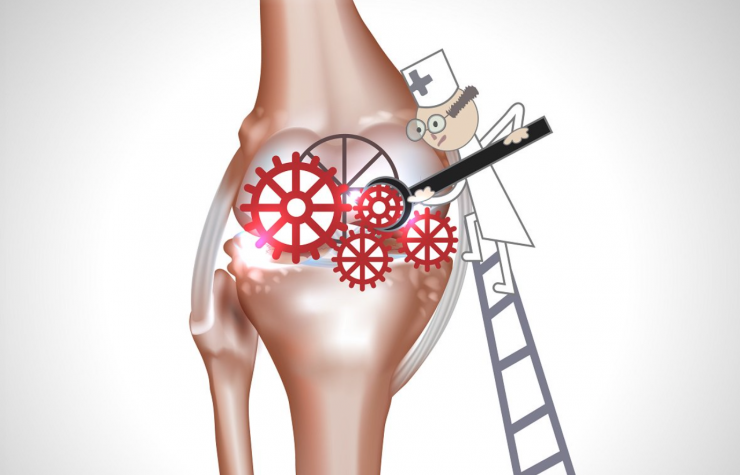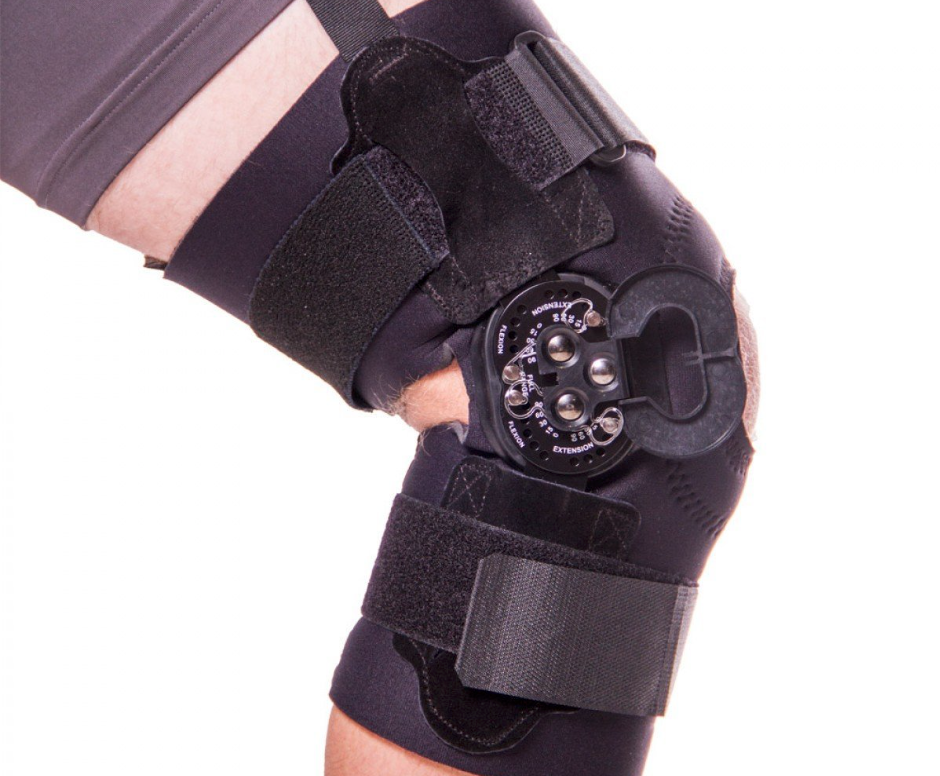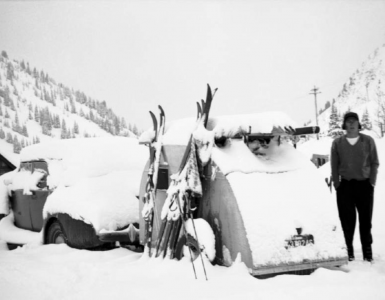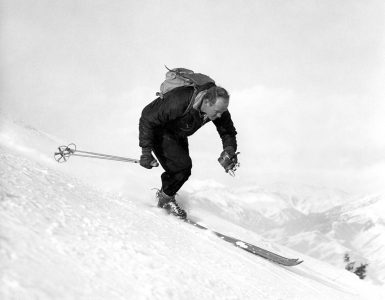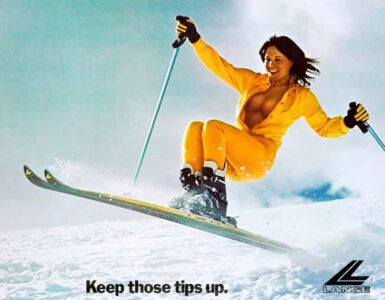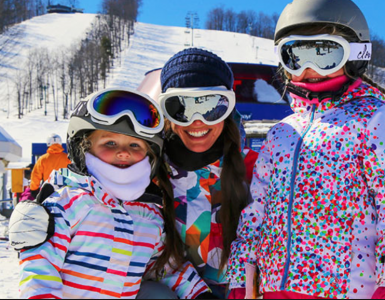By Warren Miller
 We all get older at the same rate of speed: one day at a time. I am noticing that an unwelcome percentage of my body parts are starting to wear out. After doing 343 gazillion ski turns since 1937, give or take a couple of hundred thousand, it appears that the cartilage in my right knee is finally starting to wear out.
We all get older at the same rate of speed: one day at a time. I am noticing that an unwelcome percentage of my body parts are starting to wear out. After doing 343 gazillion ski turns since 1937, give or take a couple of hundred thousand, it appears that the cartilage in my right knee is finally starting to wear out.
This is the knee that belongs to the leg I broke so badly five years ago. It seems that where my upper leg bone rubs up against my lower leg bone has worn out until there is almost no cartilage left. The orthopedic surgeons charge a lot of money to tell you that bone is rubbing against bone.
I started to notice the pain a couple of years ago, but an ace bandage kind of worked. Last winter, however, I had to start icing the knee after a day of skiing and by the time winter was half over I was using two ace bandages. By the end of skiing about 100 days, I had to add an elastic support that was always followed by at least an hour of icing every night.
I experienced all this pain despite the fact that I’m one person who heeded Dr. Steadman’s advice many years ago when he said, “Don’t ski in bumps or play tennis after the age of 45 because it is too hard on your knees.” I quit skiing in bumps right after snow grooming got invented in the mid 1950s. It was a simple decision for me to make because bumps make you turn whether you want to or not. Skiing for me is all about freedom. Cruising down a groomed run may not be a real macho thing to brag about, but the wind whistling through my crash helmet is still wonderful music to my ears. (I wish the wind was whistling through my hair, but that song went away long before they invented snow grooming.)
Back to this winter and how much my knee was hurting after only a couple of days of skiing. Dr. Scott Hormel, an orthopedic surgeon in Seattle who put my shattered leg back together with a 16-inch steel rod and a six-pack of screws, turned me onto something called an uplifter knee brace. It has a titanium hinge at the knee and there are two straps that tighten around your calf, pulling against a piece of fiberglass that has been molded to your shin, and then another two straps around your thigh, with a fifth strap that wraps around both of them. This arrangement, while cumbersome in appearance, works by simply transmitting the weight of your upper leg to your calf instead of through your knee joint that has no more cartilage.
I used this uplifter knee brace for the first time yesterday and I didn’t have to ice my knee at the end of the day for the first time in four years. Without the stabbing pain in my knee every time I made a right turn and put too much weight on my uphill ski, yesterday was a breakthrough day. I am now a man who is looking forward to four or five more years before I have to even contemplate a knee replacement.
Speaking of knee replacement, I skied last week with a bionic man. He has an artificial heart, two hip replacements and is going to have to have his second knee replacement as soon as the lifts shut off for the winter. He really got excited when I told him about my uplifter knee brace and that it might postpone his second knee replacement decision for a couple of years and maybe as many as six years.
That’s enough talk of artificial this and that. Currently, the world is full of artificial stuff, but there is nothing artificial about the feeling of making those turns on a perfectly groomed run. I know there are a lot of readers out there that scoff at the idea of groomed runs. Everybody reaches a certain age when just being able to bend over and buckle your boots will be the most macho thing you do in the course of a day of skiing. Speed is relative, for no matter how fast you ski, there is always someone who can ski faster. Remember, the world speed record on skis is over 150 mph. Yet, if you free fall out of an airplane, you will only accelerate to 126 mph by the pull of gravity against your un-streamlined body.
Getting back to knee braces. Check with your local orthopedic surgeon if you are having knee wearing-out symptoms. The process is simple. One day, they make a cast of your entire leg, let it harden, then saw the cast off and use it for a mold for the fiberglass parts of your knee brace. Then, you magically appear a week or so later in the doctor’s office and you have a brand new, no-strain, no-pain knee made out of fiberglass, titanium hinges and Velcro straps.
Best of all, you don’t have to worry about a lot of ugly bulges around your knee brace. The ski fashions of today are so bulky that no one will notice that one of your knees is larger than the other and even if they did, you wouldn’t care because you would be too busy enjoying pain-free skiing.



